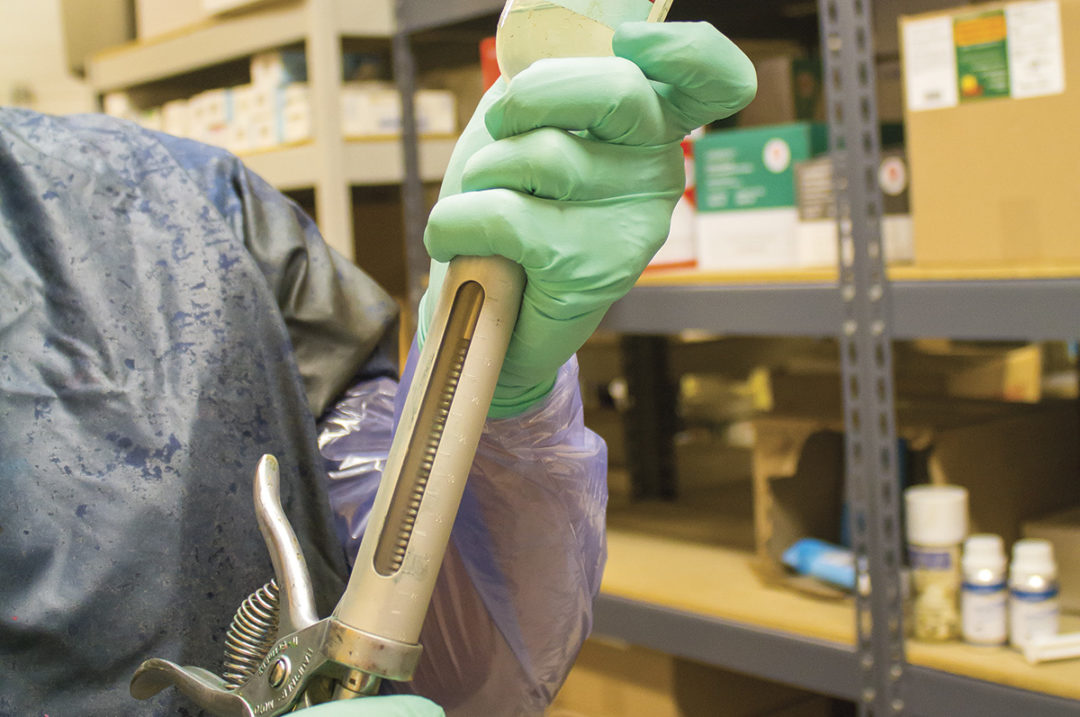The immune system is the body’s military. It is tasked with being able to recognize pathogenic invaders that have entered the body and eliminate them as quickly as possible.
Just like the military may put up walls and have guards watching to make sure an enemy doesn’t invade, the body’s innate immune system does the same. Utilizing the skin, mucous membranes, acidic environments and circulating white blood cells that patrol through the bloodstream and move to the site of infection, the body is continually watching for an invasion. Occasionally, enemies, or pathogens, are able to get past these barriers of defense and the special forces are called in, or in the case of the body, the adaptive immune system.
The adaptive immune system is designed to recognize specific pathogens; if they have entered the body once, they may try again. The body’s adaptive immune system with its specialized B and T lymphocytes work together to target these pathogens and eliminate them, either by destruction or simply neutralizing them. These cells then make memory cells so the next time the pathogen enters, the body is able to more rapidly work to eliminate the threat. B lymphocytes produce antibodies, a specialized cell of the immune system that vaccines are designed to help stimulate.
There are five general classes of antibodies or immunoglobulins: IgG (or immunoglobulin G), IgA, IgE, IgM and IgD. These classes of antibodies have specific functions within the body and are typically very effective at eliminating the threat of pathogens. There are three basic ways that this occurs: neutralizing the pathogen so it is unable to infect cells, opsonization or tagging the pathogen for other cells to come and destroy it, or simply destroying the pathogen by itself. However, just like it takes extra time to train the special forces in the military, antibodies take more time to produce in the body, and only after exposure to the pathogen they are going to attack.
To combat the extra time required by these specialized cells, vaccines are given to animals to allow time to produce the antibodies prior to attack by the real pathogen and have the antibodies ready for a potential infection. Injectable vaccines generally stimulate IgG antibodies that circulate through the bloodstream, while intranasal vaccines stimulate IgA or mucosal antibodies. Understanding how the pathogen enters the body can help to determine which class of antibody should be produced to most rapidly eliminate the disease threat, and subsequently which type of vaccine to use.
The role of vaccines is not to provide immunity to the animal; it is to provide the animal with the opportunity to develop immunity on its own prior to a natural infection. As a result, a vaccine should be given far enough in advance of when the disease challenge will occur. This will allow the animal sufficient time to develop antibodies.
Typically, the first time an animal is vaccinated against a specific pathogen, the response is slower, with fewer antibodies produced. Subsequent vaccinations with the same vaccine boost the immune system much quicker and with higher antibody levels or titers.
In 2021, the American Association of Bovine Practitioners (AABP) published vaccine guidelines for veterinarians. In this publication, the AABP listed “core” vaccines (those that all dairy and beef animals should receive) and “risk-based” vaccines (those that may be included based on the management and environment the cattle are in). Core vaccines include vaccines against IBR, PI3, BRSV, BVDV and clostridials. Risk-based may include vaccines against pinkeye, E. coli, pasteurella and mannhaemia. While everyone wants to know when and what vaccines should be given to their cattle, consulting with a local veterinarian is always best to determine the most efficacious timing and which vaccines should be administered, as there is no one-size-fits-all approach to vaccinations.
Regardless of which vaccines your veterinarian recommends, following the label instruction of “vaccinating healthy cattle” will greatly improve the vaccine response. This includes waiting to vaccinate stressed animals and ensuring that cattle are in a proper plane of nutrition, as the immune system requires large amounts of nutrients including energy and protein to produce antibodies. Another nutrient that is often overlooked that has a large impact on response to vaccines is trace minerals.
A University of Georgia study examined the effects of giving injectable trace minerals at the same time as vaccine administration. Because injectable trace minerals are rapidly absorbed into the bloodstream, it was hypothesized that concurrent administration would improve the antibody response to the vaccine. In the study, calves were given a modified-live vaccine either with or without injectable trace minerals on day 1 and again as a booster on day 21 of the study. Serial blood draws occurred throughout the study to measure serum-neutralizing antibody titers against BVDV1 virus.
A “successful” response to the vaccine was determined to be a fourfold increase in serum-neutralizing antibody titers on day 28 relative to the priming vaccine on day 1 of the study. Calves that received vaccination along with injectable trace mineral had 80% of the group successfully respond to the vaccine compared to only 53% of the calves receiving only the vaccine. In addition, individual calves that received the vaccine along with the injectable trace minerals had significantly higher titer levels compared to calves that only received the vaccine, signifying improved protection against disease.
Vaccines should be used as a management tool to bolster the special forces of the adaptive immune system. Working with a local veterinarian can help to determine which vaccines would be a benefit to calves, heifers or cows on a particular farm.
Regardless of the vaccination protocol developed, making sure that animals have as little stress as possible and have adequate nutrients will help to ensure that animals respond to the vaccines appropriately. Utilizing injectable trace minerals at the same time as vaccination may prove to be the secret weapon in taking out the pathogen before the pathogen takes out the herd.







